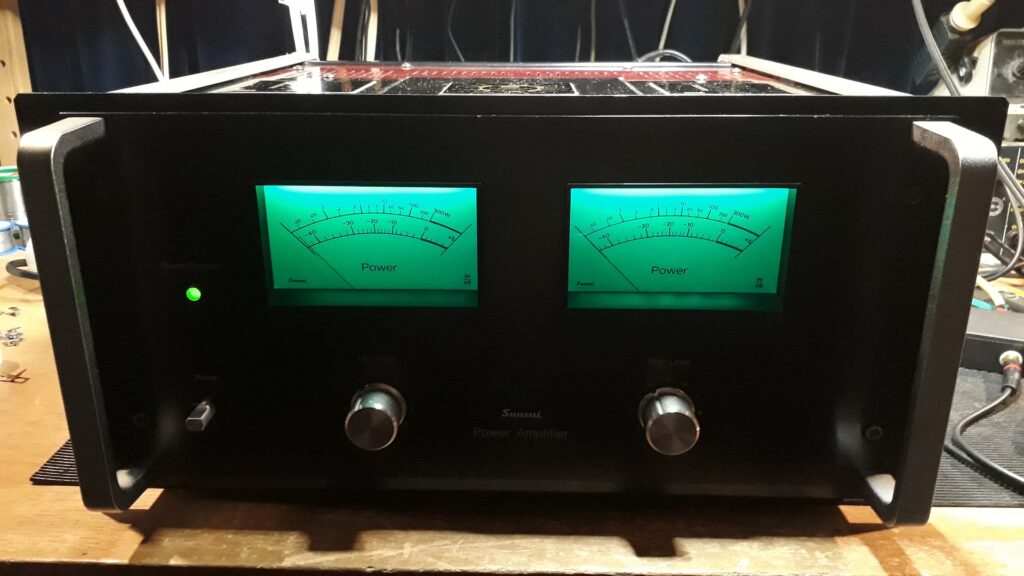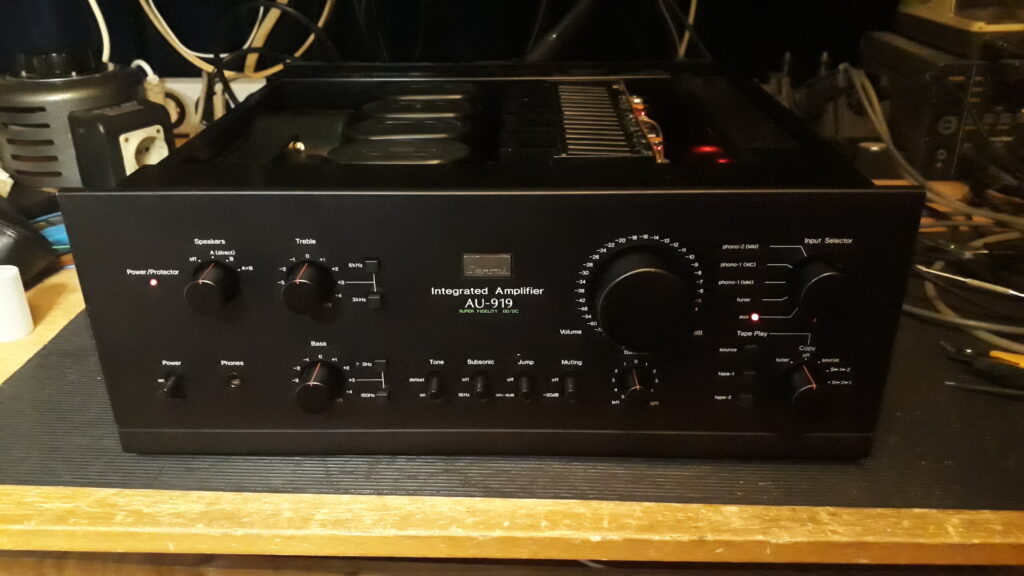Sansuicorner is a site dedicated to Sansui equipment from 1965 to 1985.
SANSUI, A PASSION.
I am an electronics technician with over 35 years experience repairing and modifying Sansui and other hifi equipment. My first memories with regards to Sansui equipment go back to the early 1970-ies, when my father and I visited a hifi shop in The Hague and my father pointed at Sansui equipment, saying: “that is some very fine equipment!”
This site represents my passion for Sansui and other fine equipment from that era.
Repairwork
Wanting to ‘save’ this beautiful equipment is labourintensive as well as satisfying, both for me as well as for the owner. Listening to an amplifier that has been repaired, overhauled, serviced and adjusted to perfection is a revelation and a pure joy.
The amount of work and dedication I put into most units would add up to an astronomical bill, if I would do this commercially, which is why I have chosen to not take that approach and keep it as a hobby. Still clients have to be prepared to do an investment that can be as high or even higher than the purchase price of the unit.
This means I do this aside from my daytime job and therefore I work neither quickly, nor do I turnover a lot of units per year. What I do, I want to do properly, or not at all.


My philosophy
Repairing is one thing, making an audio amplifier sound as good as it possibly can is another. Fundamental choices have to be made to reach the kind of perfection that would have the approval of Mr. Kikuchi, founder of Sansui. One of those choices is that at least in the signal path, I always use Japanese transistors for a Japanese amplifier, American transistors for an American amplifier, and so on. The unit might work ok when an alternative of different origin is put in, it just doen’t ‘feel’ right. Therefore I take the ‘holistic’ approach, not only paying attention to the purely technical aspects of servicing/repairing/modifying a unit, but wanting to honor the unit for both its technical and musical qualities.
Reliability is an aspect I take as more important than sound quality. This may seem strange, working on a piece of audio equipment, but first of all, one has to be in a relaxed state of mind in order to fully enjoy listening to music. This can only be achieved when the equipment as such is reliable to the point where even the slightest possibility of a unit breaking down simply does not exist in your mind anymore.
Sansui Electric Co. was founded in 1947 in Tokyo Japan.
Started as a transformer manufacturer, Sansui produced various audio products for more than fifty years. In its heydays, somewhere between the late 1970’s and the mid 1980’s, Sansui was well known brand all over the world.
The name “Sansui” means “Mountain and Water.” The implicit appreciation of “Sansui” goes back more than a thousand years to the ancient China. That was black ink drawings which depict nature, such as trees, rocks, and streams.
According to Ch’eng Hsi:
Shan shui painting is a kind of painting which goes against the common definition of what a painting is. Shan shui painting refutes color, light and shadow and personal brush work. Shan shui painting is not an open window for the viewer’s eye, it is an object for the viewer’s mind. Shan shui painting is more like a vehicle of philosophy.
A Japanese Zen monk named Sesshu who was eager to learn this technique went to China in the Ming dynasty period. After several years of visit, he came back to Japan and developed his own version of “Sansui” drawing. Sesshu tried to mix his Zen philosophy into the simplicity of “Sansui” drawing. He passed away at the age of 83 in 1503 leaving many master pieces and left fundamental influences on Japanese culture. The meaning of strength and simplicity in black and white is far beyond the level of just drawing techniques. Almost all ancient Japanese culture has been somehow influenced by this philosophy.